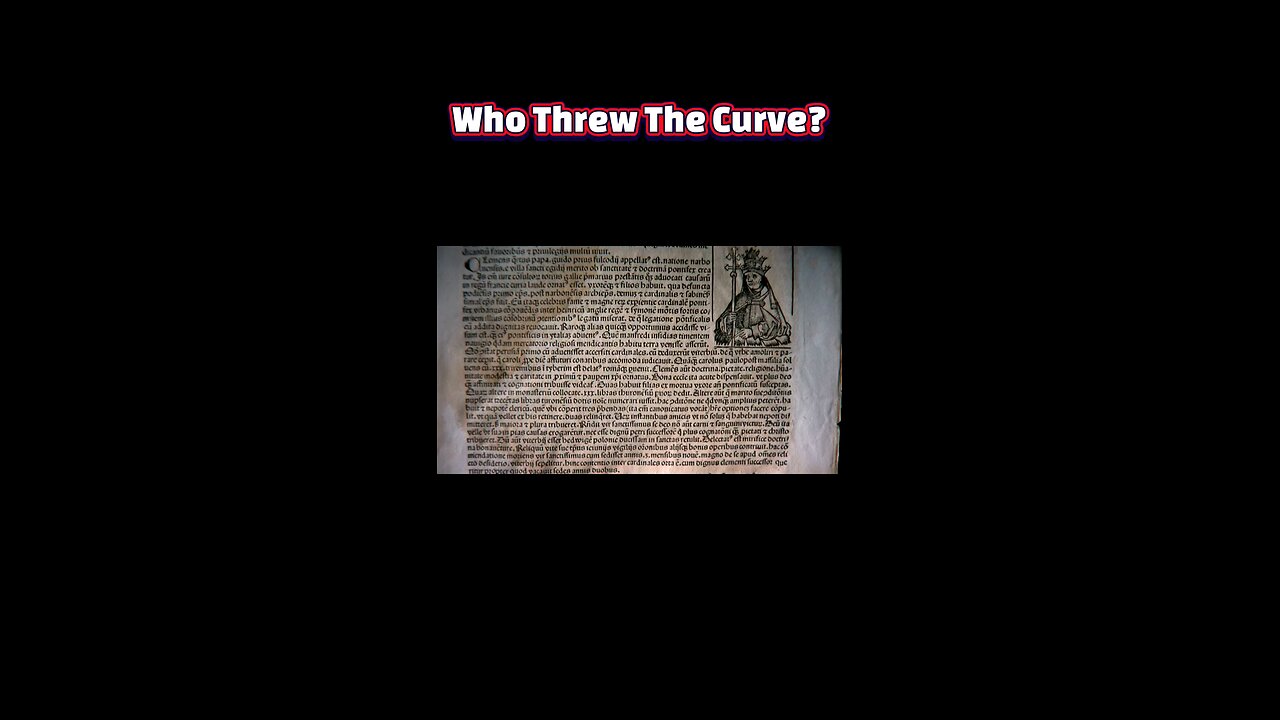Premium Only Content

Devil’s Draft: The Night the Codex Gigas Was Born
#DevilsBible #CodexGigas #MedievalMystery #ForbiddenLore #SatanicScript #HistoryHunters #LegendLivesOn
Deep within Stockholm’s National Library rests the Codex Gigas—aptly nicknamed the “Devil’s Bible” a medieval manuscript shrouded in an eerie legend and defined by a chilling full-page portrait of Satan himself.
According to folklore, in 13th-century Bohemia a Benedictine monk named Herman the Recluse violated his monastic vows. Condemned to die walled alive, he was offered a deadly bargain: produce a compendium of all human knowledge by dawn, and he’d be spared.
Faced with an impossible deadline, Herman is said to have struck a pact with the Devil. In return for his immortal soul, he would be granted the demonic power to complete the tome overnight and deliver it by sunrise.
When dawn broke, the Abbot found a 620-page masterpiece, every word inscribed in precise Latin. On one leaf, Herman included a stark tribute to his infernal collaborator: a grotesque, 19-inch-tall rendering of Satan reclining against a crimson backdrop.
Beyond its dark backstory, the Devil’s Bible is a marvel of scale: roughly 36 inches tall, 20 inches wide, and nearly 9 inches thick, weighing in at 165 pounds. Legend claims its vellum consumed the hides of 160 donkeys though scholars remain skeptical of that tally.
Inside this gargantuan volume lies the complete Vulgate Bible, flanked by Flavius Josephus’s histories, Isidore of Seville’s Etymologiae, Cosmas of Prague’s Chronicle, medical treatises like Ars Medicinae, and even guides to exorcism an encyclopedic snapshot of medieval learning.
Modern analysis strongly suggests a single scribe produced every line. Careful estimates by the National Library of Sweden argue that even a monastic writer devoting only a few hours daily would need 20–30 years to finish such a monumental work hardly an all-night miracle.
Adding to its uncanny aura, just before the dual illustrations of heaven and hell, the scribe penned an exhaustive roll-call of human sins—a confessional inventory that reads like a litany of medieval taboos, further blurring the line between piety and damnation.
Whether you see it as the product of demonic interference or the pinnacle of monastic perseverance, the Codex Gigas endures as a testament to medieval ambition and to our enduring fascination with the blurred border between sacred knowledge and forbidden lore.
-
 40:24
40:24
The Connect: With Johnny Mitchell
1 day ago $1.51 earnedInside The WORST Drug-Infested Slums Of Medellin, Colombia
8.36K4 -
 1:43:56
1:43:56
Tundra Tactical
5 hours ago $3.23 earned🛑LIVE NOW!! FBI Gets Caught LYING About Good Guys With Guns For 10 YEARS!!!!
22.9K1 -
 DVR
DVR
BlackDiamondGunsandGear
2 days agoAFTER HOURS ARMORY / Antifa / Lies/ Prison time
11.8K1 -
 DVR
DVR
DLDAfterDark
5 hours ago $1.35 earnedThe After Hours Armory! Tonight is The Chat's Chat! God, Guns, and Gear!
15.9K -
 3:32:18
3:32:18
Mally_Mouse
7 hours ago🌶️ 🥵Spicy BITE Saturday!! 🥵🌶️- Let's Play: Phasmophobia
33.9K2 -
 1:13:19
1:13:19
iCkEdMeL
3 hours ago $7.34 earnedChaos Explodes in Chicago & Portland | Feds Clash with Protesters!
26.7K6 -
 21:54
21:54
Exploring With Nug
1 day ago $7.53 earnedScuba Diving Missing Person Search Leads to Discovery of Classic Cars!
49.5K8 -
 LIVE
LIVE
Phyxicx
8 hours agoStar Wars: Movie Battles II Community Event hosted by ReaperAF95 - 10/4/2025
156 watching -
 1:19:51
1:19:51
World2Briggs
6 hours ago $2.14 earnedThe US This Week
29.2K2 -
 2:31:13
2:31:13
Joker Effect
4 hours ago"MAKE STREAMING GREAT AGAIN" - Brands Step Up Finally. Birth of Rumble Community. Taking Leadership
16.6K1
